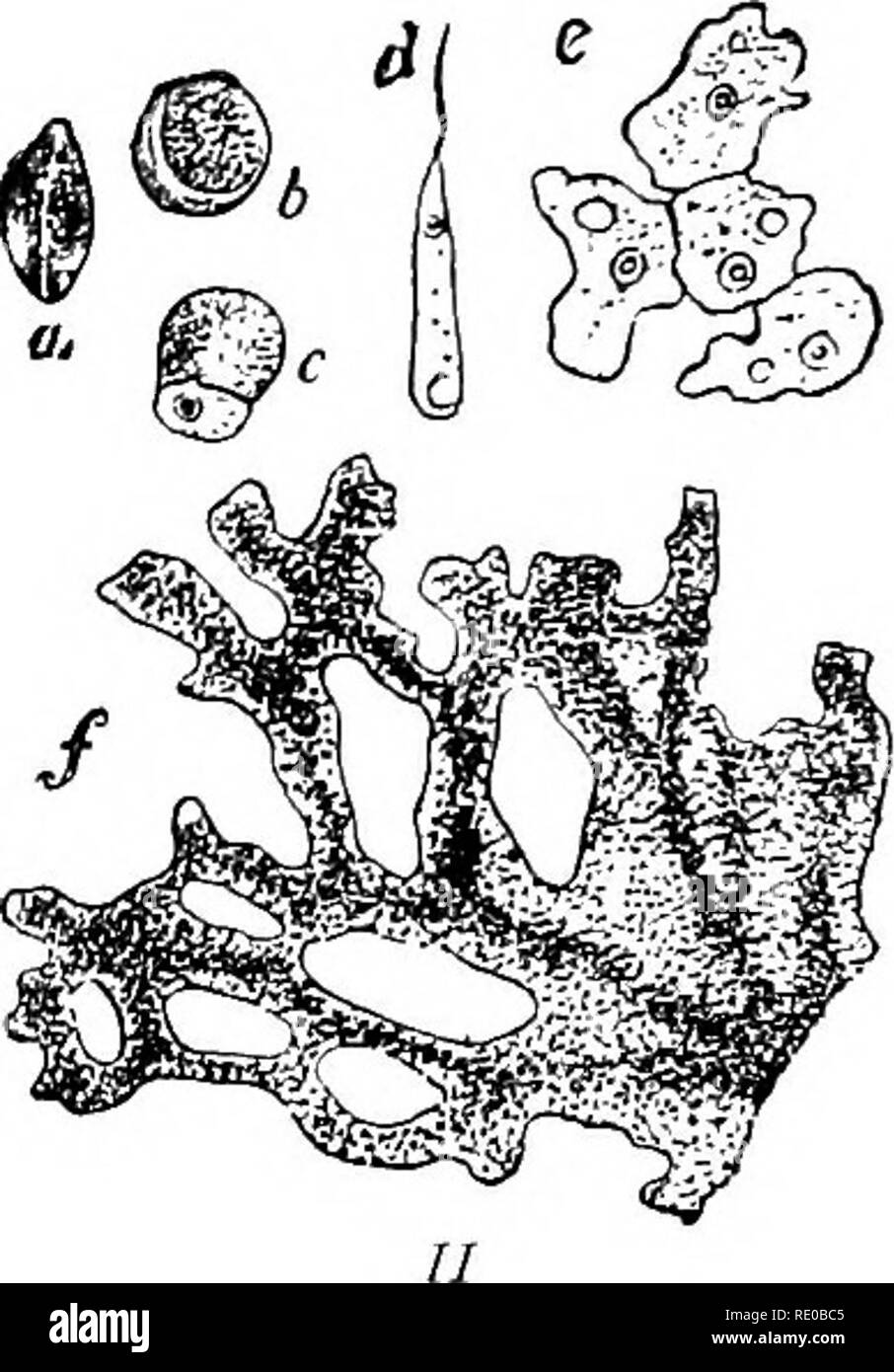. General physiology; an outline of the science of life. . Fig. 15.—/, Aethaliutn septicuni; a piece of a reticulate Myxomycete plasraodium, natural size. II, Chondrioderma dijforme ; /, piece of a Plasmodium ; a, a spore, b, the same, swelling, c, the contents of the spore is creeping out; d, tlie spore has changed into a flagellated cell; e, the flagellated cells have transformed themselves into anxoebse, which are creeping together again to form a Plasmodium. (//After Strasburger.) arises finally the large, reticulate ^alasmodium. This plasmodium, therefore, although representing a unitary

Image details
Contributor:
The Book Worm / Alamy Stock PhotoImage ID:
RE0BC5File size:
7.1 MB (312.2 KB Compressed download)Releases:
Model - no | Property - noDo I need a release?Dimensions:
1320 x 1892 px | 22.4 x 32 cm | 8.8 x 12.6 inches | 150dpiMore information:
This image is a public domain image, which means either that copyright has expired in the image or the copyright holder has waived their copyright. Alamy charges you a fee for access to the high resolution copy of the image.
This image could have imperfections as it’s either historical or reportage.
. General physiology; an outline of the science of life. . Fig. 15.—/, Aethaliutn septicuni; a piece of a reticulate Myxomycete plasraodium, natural size. II, Chondrioderma dijforme ; /, piece of a Plasmodium ; a, a spore, b, the same, swelling, c, the contents of the spore is creeping out; d, tlie spore has changed into a flagellated cell; e, the flagellated cells have transformed themselves into anxoebse, which are creeping together again to form a Plasmodium. (//After Strasburger.) arises finally the large, reticulate ^alasmodium. This plasmodium, therefore, although representing a unitary protoplasmic mass con- taining many nuclei and without cell-boundaries, has arisen from many single cells. Hence, strictly, it is not proper to consider the Plasmodium of Myxomycetes as a multinucleate cell; at the same time it is not justifiable to speak of it as a genuine tissue, for no cell-boundaries are marked out for the single nuclei. A special name, therefore, has been created for these intermediate stages between the single cell and the tissue, and they have been called syncytia. B. THE MORPHOLOGICAL NATURE OF LIVING SUBSTANCE 1. The Form and Size of the Cell The chief fact that has stood in the way of a consistent ex- tension of the cell-theory and one that still presents at first the greatest difficulties to all who study the finer structure of organ- isms, is the astonishing variety of forms in which the elementary constituent of organisms appears. The forms of the different. Please note that these images are extracted from scanned page images that may have been digitally enhanced for readability - coloration and appearance of these illustrations may not perfectly resemble the original work.. Verworn, Max, 1863-1921; Lee, Frederic S. (Frederic Schiller), 1859-1939. London, Macmillan and co. , limited; New York, The Macmillan company